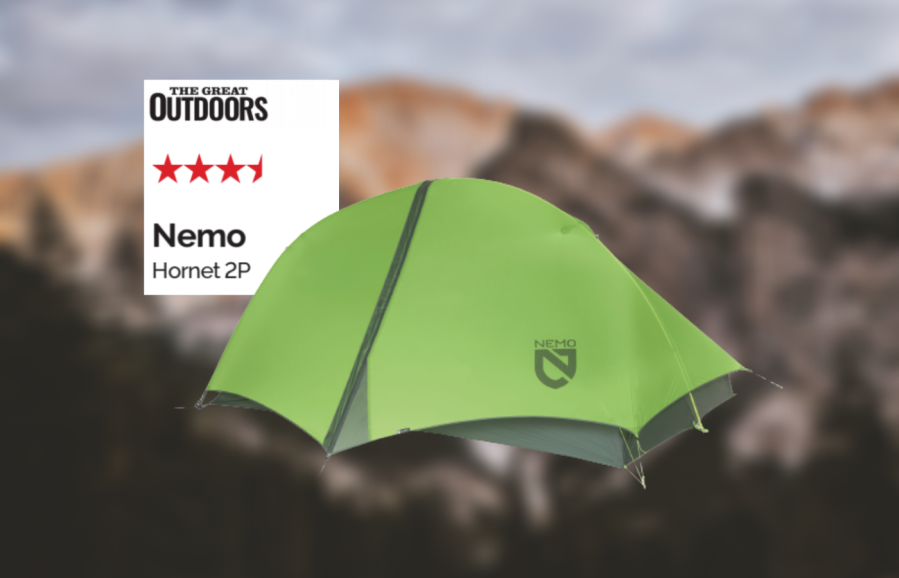As part of his review of the best one-person tents, Chris Townsend tests the Nemo Hornet.
Nemo were unable to supply the solo Hornet for test so sent the 2 person one, which is still very light. The Nemo Hornet one-person tent weighs some 200 grams less and costs £350. The design and materials are the same except that it only has one porch.
- Price:£400
- Weight: 1145g
- Pros: low weight, roomy inner, big porches
- Cons: low hydrostatic head on groundsheet, cutaway flysheet
Flysheet: 10D silicone/PU ripstop nylon, 1200mm HH | Inner: 10D Nylon Ripstop/mesh | Groundsheet: 15D silicone/PU ripstop nylon, 1200mm HH | Poles: DAC Featherlite | Porches: x2,71cm deep | Inner Dimensions: 223cm x 127/114cm, 104cm high point
The Nemo Hornet is another tent with a long pole that splits into an arch at the front. There are short struts at the rear to give more volume. The Hornet 2P is long with excellent headroom and would be good for someone tall. The Hornet 1P is a little smaller at 222 x 108/79cm with a high point of 98cm. Both models have large plastic clips called Flybars on the top of the inner that create more room. Like similar tents the Hornet pitches inner first and can be erected quickly, essential in the rain.
The inner tent is mostly mesh. The flysheet ends well above the ground and at the wide end there’s a big cut-out. The groundsheet walls are higher here and quite high all around. I haven’t had any rain entering but there is a possibility it could through the gap between fly and inner. Whilst this design is good for ventilation strong winds can bellow through the gap and make the inner a little breezy. The groundsheet has a low hydrostatic head. Nemo don’t recommend a footprint. I’d use one for more than occasional use.
The Nemo Hornet is a good tent but best suited to warm, dry conditions. For the more usual wet and windy British weather it’s not the best design.
To read the other tent reviews in this test head to The Great Outdoors’ best one-person backpacking tents.

Tested by Chris Townsend
Chris tested these tents in the Scottish Highlands, mostly the Cairngorms, over autumn 2021 and winter 2022. Sites were both high and low level and at times the tents were subjected to more severe weather than they are designed for. Note: weights are for the tent complete with stuffsacks.
This review first appeared in the May 2022 issue of The Great Outdoors.








